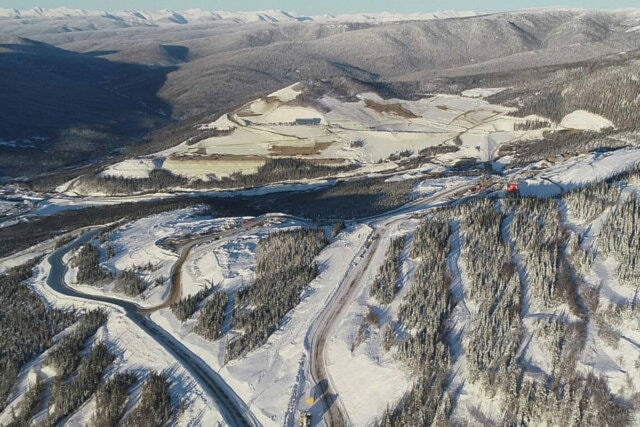Yukon representatives paid close attention to mining industry trends at an industry conference this week.
There was also keen interest in presentations about the Yukon’s mining sector and local geology.
The AME Roundup, an annual conference hosted by the Association for Mineral Exploration British Columbia in Vancouver, ran from Jan. 31 to Feb. 3.
Scott Casselman, head of mineral services for the Yukon Geological Survey, presented alongside government representatives from B.C. and Alaska.
Notable in his presentation was the scale of mining in the Yukon rebounding from the effects of the COVID-19 pandemic and the continued dominance of gold as the territory’s commodity of choice.
Presenting to the conference virtually from Whitehorse, Casselman told the audience that mines in the Yukon saw effects of the pandemic continuing in 2021 but mining companies, suppliers and contractors are continuing to adapt.
Casselman noted a continuing shortage of workers, particularly underground miners and diamond drillers. Despite this, he said the territory’s three operating hard rock mines were able to increase production in 2021 — the year saw an overall increase in mining activity over 2020 in a return to more normal levels.
According to Casselman, gold remains the primary target of mining activity in the Yukon. Fifty-nine per cent of funds spent on exploration in the territory go to gold projects. It is followed by projects focusing on silver, zinc and lead.
Those other minerals may prove to be of greater importance in the future, as the growing demand for materials used in electric car batteries was noted by Lise Farynowski of the Yukon government’s economic development department.
Farynowski was one of two economic development employees and Yukon University representatives, mostly from the Centre for Northern Innovation in Mining, that attended the conference in Vancouver.
She noted a world bank study that suggested demand for those minerals could increase by more than 500 per cent. Copper, lead and zinc are all used in electric car batteries but Farynowski said nickel was most prominently discussed at the conference. She noted that Canada only has seven operating nickel mines and the Yukon contains nickel deposits.
Farynowski said the conference also featured discussion of environmental and social governance in the mining industry. This included ways to support local communities and to reduce the consumption of energy and water as well as the emission of greenhouse gasses in mining operations.
Also of note for Farynowski was that the E.A. Scholz award, presented annually to went to Victoria Gold Corp. CEO John McConnell for his work getting the company’s Eagle Gold Mine into production.
Also in virtual attendance at the conference was Yukon NDP leader Kate White.
“Although the conference looks different this year, it remains a great opportunity to meet with industry representatives, First Nation leaders, pro spectors and geoscience experts and hear what they have to say,” White wrote in a statement for the media.
“It’s important that we open up the conversation as to how we envision the future of mining and mining exploration in Yukon and work together to find solutions for everyone.”
— With files from Lawrie Crawford
Contact Jim Elliot at jim.elliot@yukon-news.com
